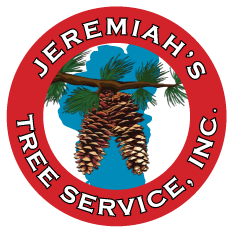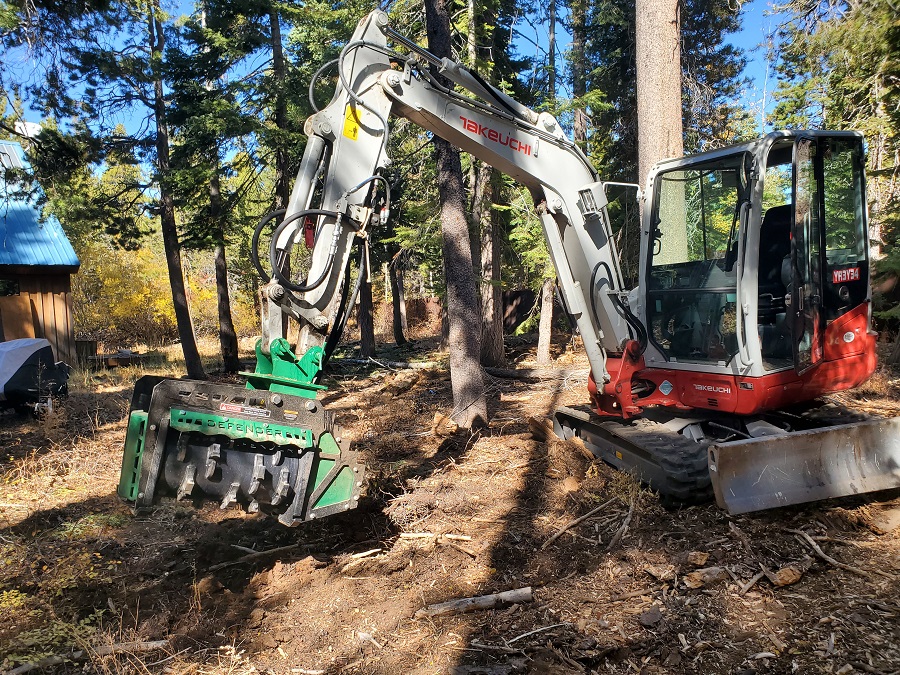Introduction: A Silent Tree Killer on Construction Sites
Construction and development projects are a common part of life in the Lake Tahoe region. From new home builds to driveway repaving and utility work, these projects shape our neighborhoods. But beneath the surface—literally—there’s an often-overlooked hazard that poses a serious threat to tree health: soil compaction, especially on construction sites where these activities take place.
At Jeremiah’s Tree Service, we’ve seen hundreds of trees decline or die years after nearby construction—often because of damage that was invisible at the time. One of the leading culprits? Compacted soil. Construction equipment is a primary cause of soil compaction on construction grounds.
What Is Soil Compaction?
Soil compaction occurs when heavy machinery, foot traffic, or repeated pressure crushes air pockets in the soil, increasing soil density by forcing soil particles closer together through the compaction process. These pockets are vital—they hold oxygen and water that tree roots need to survive, and proper air and water movement is essential for maintaining healthy soil conditions.
Once compacted, soil becomes dense and impermeable, making it difficult for:
- Roots to grow and expand
- Compacted soils inhibit root growth and plant growth
- Water to infiltrate and reach deep roots
- Microorganisms to thrive
- Soil organisms are affected by reduced air and water movement
- Trees to access oxygen and nutrients
Different soil types, such as clay soils, granular soils, cohesive soils, and non cohesive soils, respond differently to compaction, and proper compaction methods and compaction equipment are selected based on soil type and moisture content.
Even a few passes of equipment over the root zone of a tree can lead to long-term stress or eventual tree death. Equipment traffic and heavy equipment are major contributors to soil compaction on construction zones, and proper management practices manual guidelines can help reduce soil compaction and prevent soil compaction.
Achieving maximum density or maximum dry density is a goal in geotechnical engineering to ensure a stable foundation for the entire structure during the construction process, and proper compaction and optimum moisture content are critical for preventing future settlement and poor drainage.
Loose soil allows for better air and water movement, root systems, and plant growth compared to compacted soils.
Typically combined pressure and weight are used in compaction methods to achieve properly compacted soil, and soil properties and soil conditions must be considered.
Why Compacted Soil Is So Dangerous for Trees
Most people think of tree roots as deep and isolated. In reality, over 90% of tree roots are in the top 18 inches of soil, and they often spread out two to three times the width of the tree’s canopy. Plant roots and root systems are especially vulnerable to compaction during a construction project, which can inhibit plant growth and root growth.
That means:
- Parking construction vehicles under a tree
- Storing materials near the trunk
- Digging, trenching, or changing the grade around the root zone
- Disturbing undisturbed soil can inhibit plant growth and root growth by reducing soil porosity and limiting the ability of plant roots and root systems to access water, nutrients, and oxygen
…can cause compaction and root injury, even if the tree looks unaffected in the short term.
Compacted soil can also lead to poor drainage, increased runoff, soil erosion, and water seepage, all of which negatively impact plant growth and tree health.
The effects may take years to appear: dieback in the canopy, slow growth, pest infestations, or sudden collapse during storms.
How to Protect Trees During Construction Activities
Here’s how we help clients minimize the impact of construction on their trees by following management practices manual guidelines to prevent soil compaction during a construction project:
Proper equipment storage and planning during the construction process are essential for protecting soil and tree health.
1. Pre-Construction Tree Assessment
Our certified arborists evaluate which trees are high-value, vulnerable, or worth preserving.
2. Establishing Tree Protection Zones (TPZs)
We mark no-go areas around tree root zones and install fencing or signage to keep traffic away.
3. Air Spading and Soil Restoration
After construction, we can decompact highly compacted soil using specialized air tools and add organic amendments to restore root health.
4. Ongoing Monitoring and Support
For trees under stress, we offer deep root fertilization, mulching, and Tree Balance (tree growth regulator) treatments to support recovery.
Why Alleviating Compaction Matters in Lake Tahoe
Lake Tahoe’s shallow soils and drought-prone conditions make trees especially vulnerable to soil disturbance and compaction. Native pines, firs, and aspens rely on loose, well-drained soils to thrive. Wet soils in the region are especially vulnerable to deep compaction, which can harm soil organisms that support soil structure and vitality, and can also lead to increased runoff. When those soils are compacted, it’s much harder for trees to bounce back—especially when also facing bark beetles, dry air, and wildfire stress.
Compacted soil from construction projects can lead to soil erosion and other long-term environmental impacts.
Whether you’re building a home, paving a driveway, or planning a landscaping project, early planning with an arborist can help save trees that would otherwise be lost.
Trust Our Experts to Treat Soil Compaction from Construction
At Jeremiah’s Tree Service, we’re not just tree cutters—we’re tree protectors. Since 1985, we’ve helped Lake Tahoe property owners preserve the beauty, health, and safety of their landscapes.
If you’re planning construction and want to protect your trees from compacted soil, contact us at (530) 581-1945 for a tree preservation consultation.

